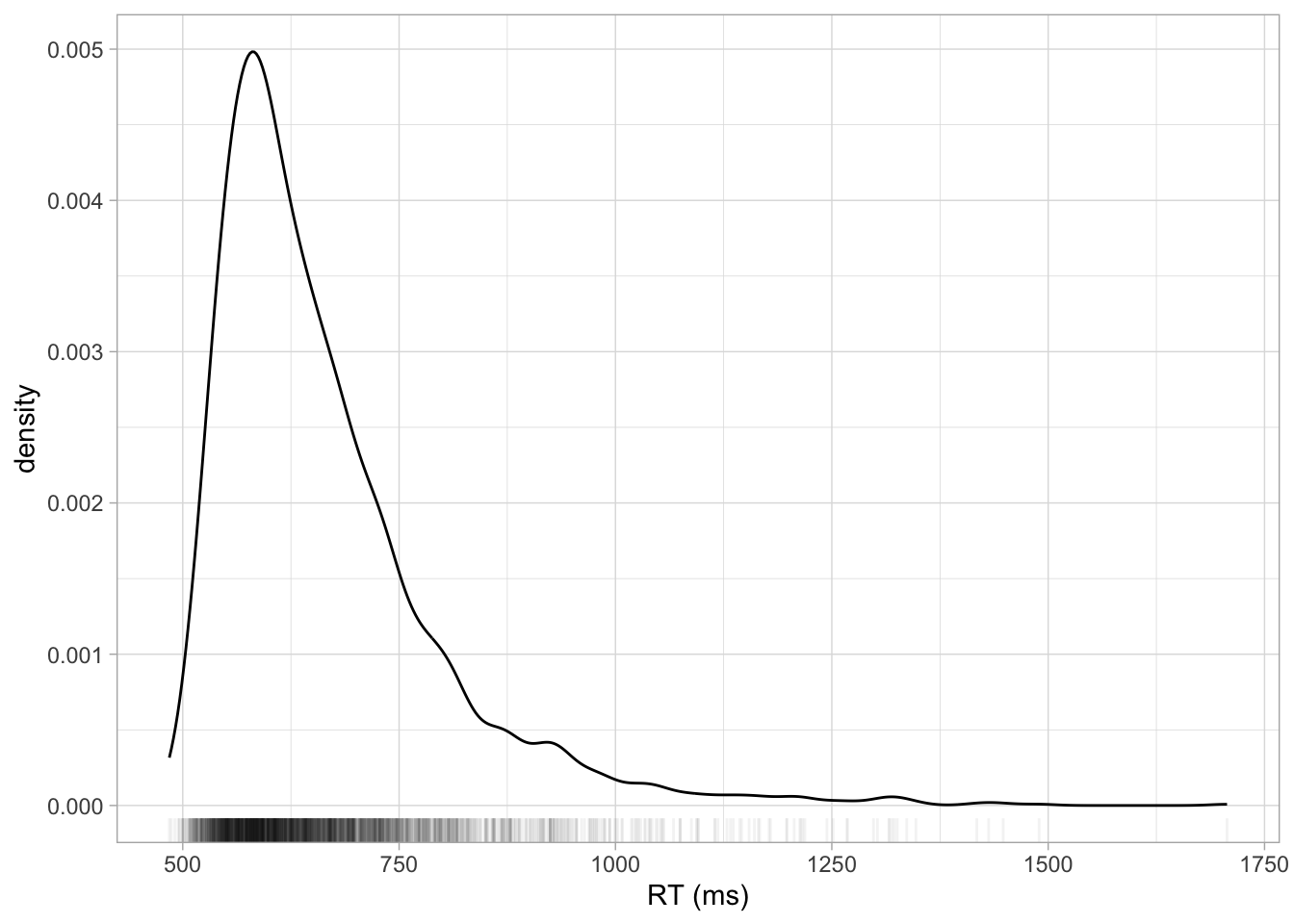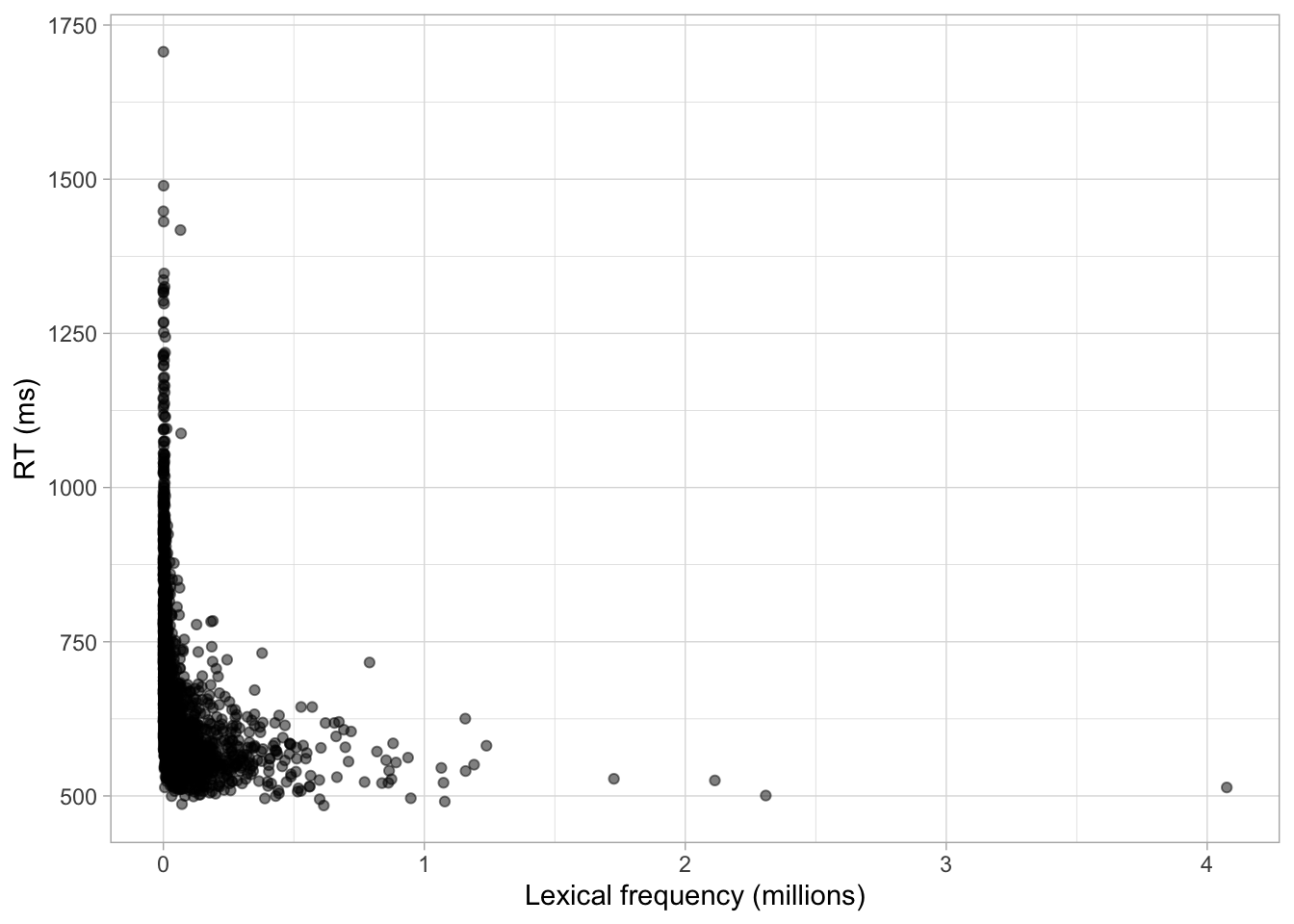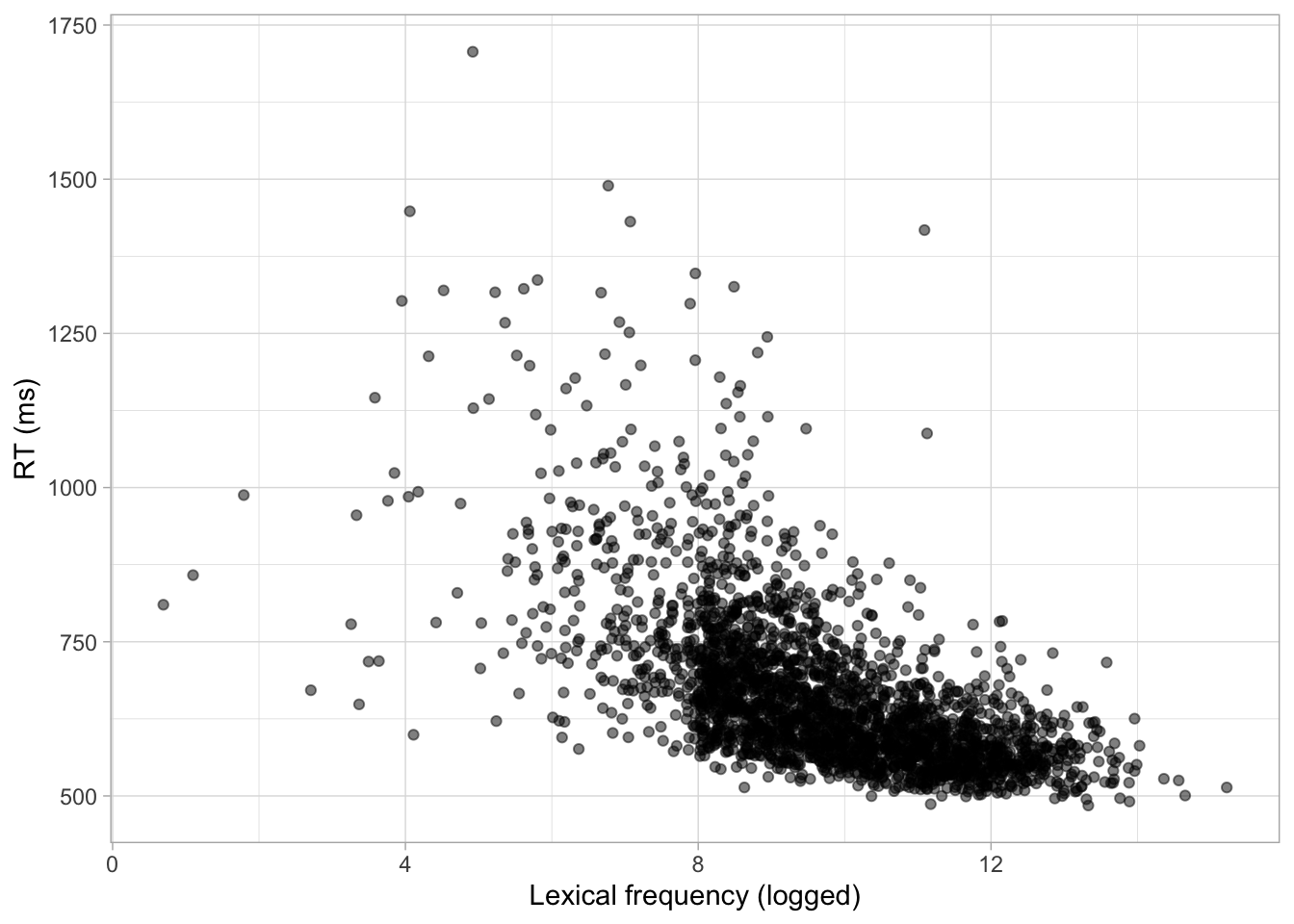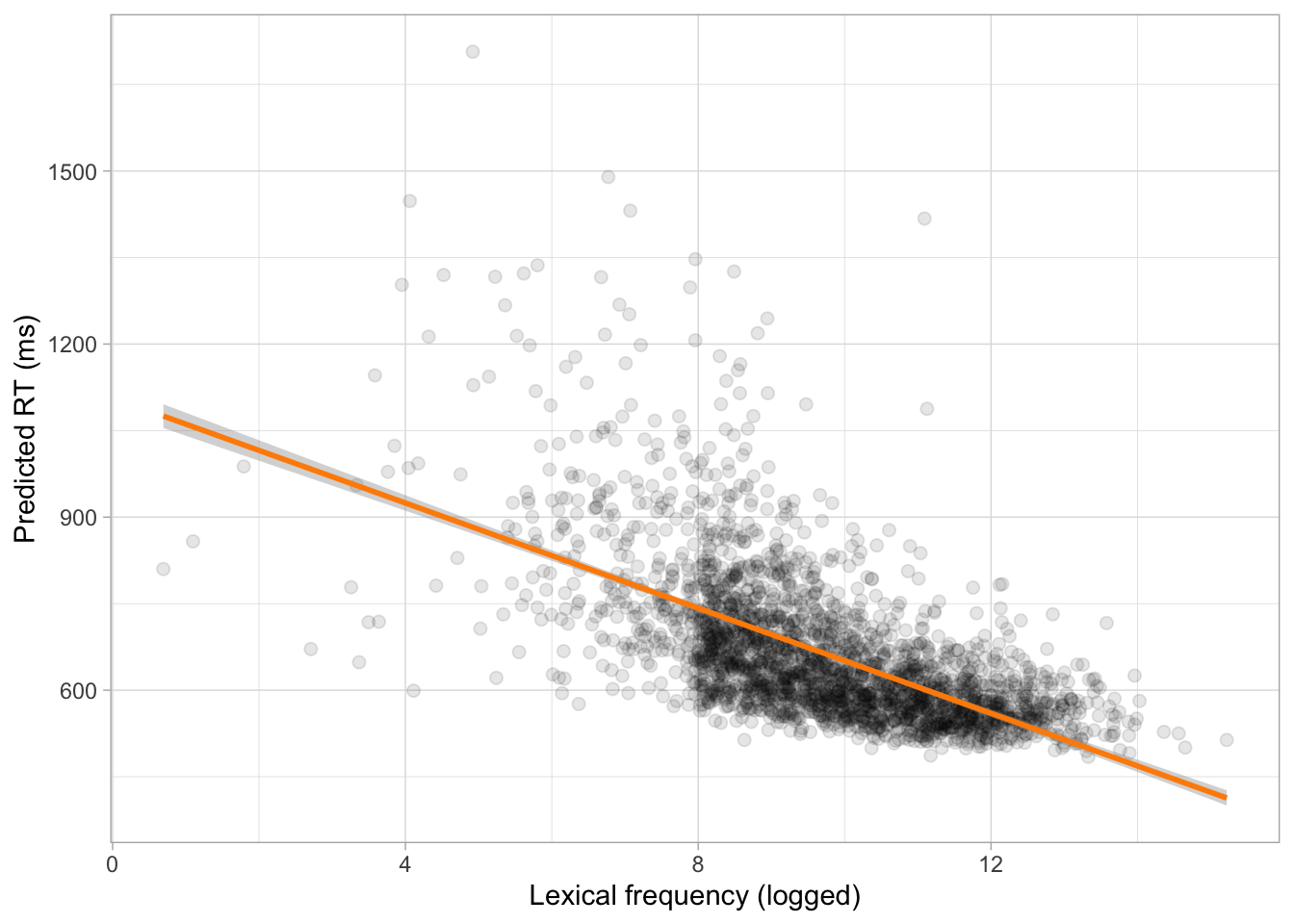QML - Week 5
Regression models: the basics
Word frequency and reaction times
What is the relationship between a word’s lexical frequency and reaction times in a lexical decision task in Croatian?
Data from Lexical decision times for nouns from the Croatian Psycholinguistic Database.
Lexical decision task (is it a real Croatian word?)
Reaction times.
Word frequency: counts from the Croatian web Corpus hrWaC.
Which relationship?
Reaction times

Word frequency and RTs

Logged word frequency and RTs

Gaussian model of RT
\[ RT \sim Gaussian(\mu, \sigma) \]
But we want to know what happens to RTs depending on the value of lexical frequency…
Then we let the mean \(\mu\) vary by lexical frequency!
\[ \begin{align} RT & \sim Gaussian(\mu, \sigma)\\ \mu & = \beta_0 + \beta_1 \cdot logf \end{align} \]
But what are those \(\beta_0\) and \(\beta_1\)?
The equation of a line
\[ y = \beta_0 + \beta_1 \cdot x \]
Go to Linear models illustrated.
\(\beta_0\) is the line intercept: the \(y\) value when \(x\) is
0zero.\(\beta_1\) is the line slope: the change in \(y\) for each unit-increase of \(x\).
Regression model
\[ \begin{align} RT & \sim Gaussian(\mu, \sigma)\\ \mu & = \beta_0 + \beta_1 \cdot logf & \text{[Regression equation]} \end{align} \]
A regression model is a model based on the equation of a line.
The model estimates \(\beta_0\) (the intercept) and \(\beta_1\) (the slope) from the data (i.e. the observed \(RT\) and \(logf\) values).
\(\beta_0\), intercept
- Mean RT value when logged frequency is
0zero (i.e. when word frequency is 1;exp(0)= 1).
- Mean RT value when logged frequency is
\(\beta_1\), slope
- Change in mean RT for each unit increase of log-frequency (when log-frequency goes from \(x\) to \(x + 1\)).
Model’s posterior predictions

Word frequency and reaction times (bis)
What is the relationship between a word’s lexical frequency and reaction times in a lexical decision task in Croatian?
When log-frequency is 0, the mean RTs are between 1084 and 1129 ms at 95% confidence.
For each unit increase of log-frequency, the mean RTs decrease by 43-48 ms, at 95% confidence.
Correlation in NOT causation
Be careful!
Correlation between two variables: they co-vary, i.e. they show a systematic association (their values tend to vary together in a consistent pattern).
Spurious correlations: two variables can look correlated because of bias from another variable.
- Number of plant names in a language vs. biodiversity of the region
- Languages in biodiverse regions have more words for plants.
- Mediator: cultural reliance on plants.
- Language endangerment vs. economic development
- Higher economic development is associated with greater language endangerment.
- Confounder: colonial history.
- Language prestige vs government policy
- High prestige languages and officially supported languages each attract learners.
- Collider: If you only look at languages with many learners, prestige and policy might appear related even if they’re not causally connected.
But it is if you use causal inference…
Causal inference
Correlation can be interpreted causally if you adopt a causal inference approach.
Learn about it in McElreath’s textbook Statistical Rethinking. Also check STeW.